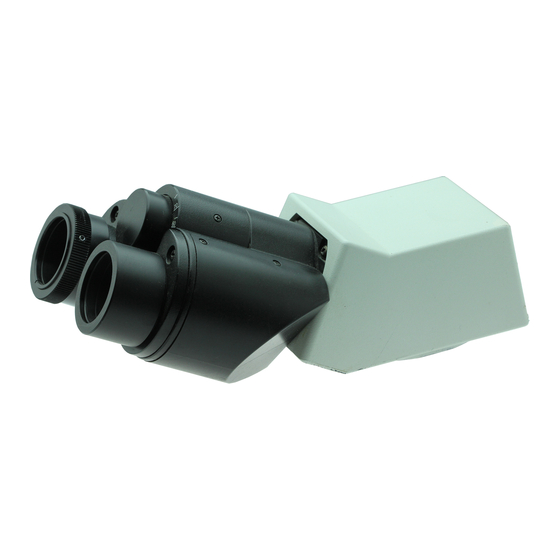Olympus U-BI30-2 Manuel d'instructions - Page 15
Parcourez en ligne ou téléchargez le pdf Manuel d'instructions pour {nom_de_la_catégorie} Olympus U-BI30-2. Olympus U-BI30-2 36 pages. Motorized illumination system with motorized focusing unit

Field iris diaphragm image
Eyepiece field of view
@
8
9
Fig. 6
70%
30%
Aperture iris diaphragm image
Using the Field Iris Diaphragm
{In reflected light brightfield observation:
The field iris diaphragm adjusts the illuminated area in order to obtain
high-contrast images.
Adjust the field iris diaphragm auxiliary lever 4 of the illuminator according
to the objective in use so that the field iris diaphragm image circumscribes
the field of view and block penetration of excess light in the field.
{In reflected light darkfield observation:
Always open the field iris diaphragm fully by pushing in the field iris
diaphragm auxiliary lever 4 all the way.
3
Centering the Aperture Iris diaphragm (AS)
# The aperture iris diaphragm is locked by a lock screw 6 (Fig. 5) on the
illuminator. Be sure to unlock it by loosen the screw using the Allen
screwdriver (3 mm), provided with the illuminator, before proceeding
to centering.
After completing centering, be sure to lock the diaphragm again to
prevent its malfunction.
1. Press the BF button 1 of the hand switch to select the reflected light
brightfield light path.
2. Press the objective button 3 (Fig. 4) of the hand switch to engage the
10X objective in the light path, place the specimen on the specimen
table and bring the specimen into approximate focus.
}It is recommended to use a highly reflective specimen such as a mirror
to facilitate viewing the aperture iris diaphragm image.
3. Remove an eyepiece, look into the eyepiece sleeve and press the AS-
button 8 of the hand switch to stop down the aperture iris diaphragm to
about 70% opening.
4. If the center of the aperture iris diaphragm is deviated, insert the Allen
screwdriver into the two AS centering screws 7 (Fig. 5) and adjust them
to center the aperture iris diaphragm.
Using the Aperture Iris Diaphragm
{In reflected light brightfield observation:
In general, optimum observation is possible by controlling the aperture
iris diaphragm to between 70% and 80% of the aperture number of the
objective.
{In reflected light darkfield observation:
Always open the field iris diaphragm fully by pushing the AS+ button 9.
}With certain specimens, images with high contrast and little flare can be
observed by stopping down the aperture iris diaphragm below the stan-
dard aperture.
BXFMA
(Figs. 4 to 6)
11
